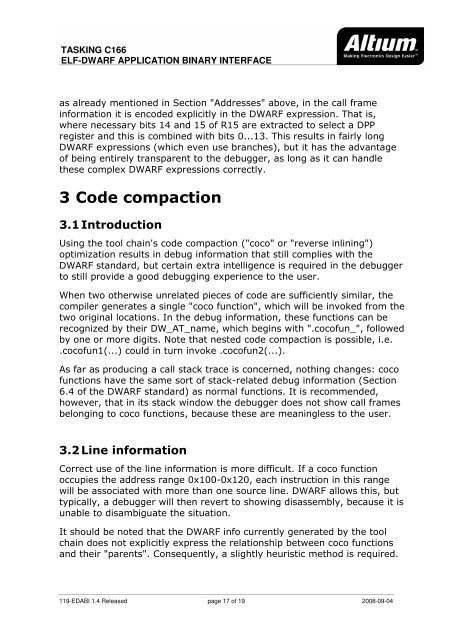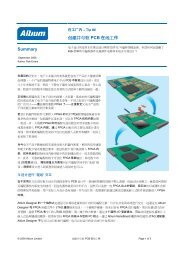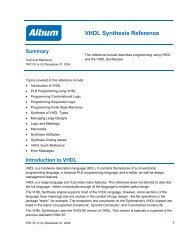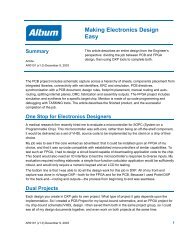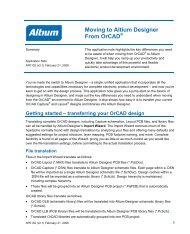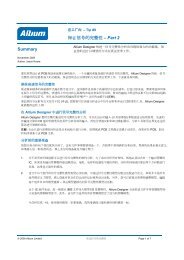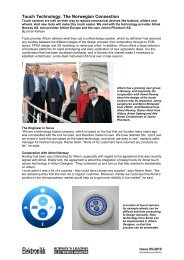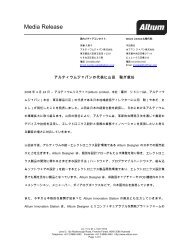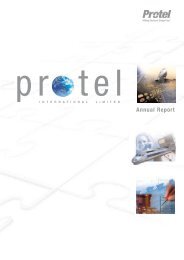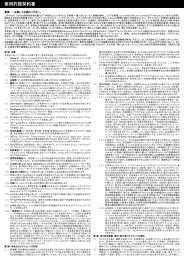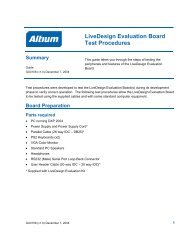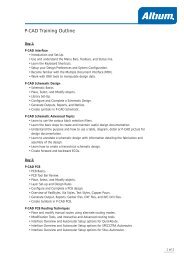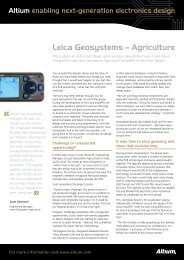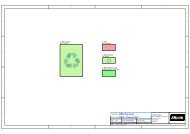TASKING C166 ELF-DWARF APPLICATION BINARY INTERFACE
TASKING C166 ELF-DWARF APPLICATION BINARY INTERFACE
TASKING C166 ELF-DWARF APPLICATION BINARY INTERFACE
You also want an ePaper? Increase the reach of your titles
YUMPU automatically turns print PDFs into web optimized ePapers that Google loves.
<strong>TASKING</strong> <strong>C166</strong><br />
<strong>ELF</strong>-<strong>DWARF</strong> <strong>APPLICATION</strong> <strong>BINARY</strong> <strong>INTERFACE</strong><br />
as already mentioned in Section "Addresses" above, in the call frame<br />
information it is encoded explicitly in the <strong>DWARF</strong> expression. That is,<br />
where necessary bits 14 and 15 of R15 are extracted to select a DPP<br />
register and this is combined with bits 0...13. This results in fairly long<br />
<strong>DWARF</strong> expressions (which even use branches), but it has the advantage<br />
of being entirely transparent to the debugger, as long as it can handle<br />
these complex <strong>DWARF</strong> expressions correctly.<br />
3 Code compaction<br />
3.1 Introduction<br />
Using the tool chain's code compaction ("coco" or "reverse inlining")<br />
optimization results in debug information that still complies with the<br />
<strong>DWARF</strong> standard, but certain extra intelligence is required in the debugger<br />
to still provide a good debugging experience to the user.<br />
When two otherwise unrelated pieces of code are sufficiently similar, the<br />
compiler generates a single "coco function", which will be invoked from the<br />
two original locations. In the debug information, these functions can be<br />
recognized by their DW_AT_name, which begins with ".cocofun_", followed<br />
by one or more digits. Note that nested code compaction is possible, i.e.<br />
.cocofun1(...) could in turn invoke .cocofun2(...).<br />
As far as producing a call stack trace is concerned, nothing changes: coco<br />
functions have the same sort of stack-related debug information (Section<br />
6.4 of the <strong>DWARF</strong> standard) as normal functions. It is recommended,<br />
however, that in its stack window the debugger does not show call frames<br />
belonging to coco functions, because these are meaningless to the user.<br />
3.2 Line information<br />
Correct use of the line information is more difficult. If a coco function<br />
occupies the address range 0x100-0x120, each instruction in this range<br />
will be associated with more than one source line. <strong>DWARF</strong> allows this, but<br />
typically, a debugger will then revert to showing disassembly, because it is<br />
unable to disambiguate the situation.<br />
It should be noted that the <strong>DWARF</strong> info currently generated by the tool<br />
chain does not explicitly express the relationship between coco functions<br />
and their "parents". Consequently, a slightly heuristic method is required.<br />
119-EDABI 1.4 Released page 17 of 19 2008-09-04



